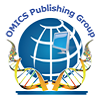Our Group organises 3000+ Global Conferenceseries Events every year across USA, Europe & Asia with support from 1000 more scientific Societies and Publishes 700+ Open Access Journals which contains over 50000 eminent personalities, reputed scientists as editorial board members.
Open Access Journals gaining more Readers and Citations
700 Journals and 15,000,000 Readers Each Journal is getting 25,000+ Readers
Indexed In
- Google Scholar
- RefSeek
- Hamdard University
Useful Links
Share This Page
Can the octahedral shear strain solely predict tissue differentiation during normal fracture healing
Jalil Nourisa1, Gholamreza Rouhi1 and Ghadir Shaygan2
Abstract
The mechano-regulation algorithm using interstitial fluid velocity (FV) and octahedral shear strain (OSS) is well-accepted for predicting normal fracture healing in a poroelastic medium (PM). However, the ability of OSS as a single bio-feedback variable to predict the normal healing pattern in a PM is still a place of debate. This work is an attempt to check the validity of the hypothesis that the OSS could solely regulate tissue differentiation in a PM, as well as to investigate whether or not the OSS could solely regulate tissue differentiation in an elastic medium (EM). For this purpose, a 2D model of a broken tibia, with a 3 mm fracture gap, was made and a biphasic finite element analysis was done to simulate bone healing process. The differentiation of stem cells and development of tissues was implemented as a biofeedback loop by use of Python scripting in Abaqus software. In the poroelastic model, results of this study showed that OSS could predict bone formation at the callus tip and the intramedullary canal, as well as its progress toward intracortical gap successfully. However, it failed to predict bony bridge at the external callus and a narrow strip area was left with fibrous tissue, which restrained completion of healing pattern. In the elastic model, OSS correctly predicted healing process, but the completion of process occurred much faster than in normal healing. In conclusion, results of this study indicate that OSS cannot be considered as a single regulator of tissue development in the normal fracture healing process.Biography
Gholamreza Rouhi received his BSc and MSc degrees from Sharif University of Technology, and his PhD from the University of Calgary for his investigations on bone remodelling and resorption theories. After earning his PhD degree, he joined University of Ottawa, Canada, as Assistant Professor. He then moved back to Iran and was recruited by Amirkabir University of Technology (AUT). He is involved in various projects including: Bone fracture healing; bone remodelling theories; bone-implants interaction; orthopaedic implants and prostheses; and biomechanics of articularcartilage. He is now the Director and Principal Investigator of Orthopaedic & Dental Biomechanics Lab at AUT.

 Spanish
Spanish  Chinese
Chinese  Russian
Russian  German
German  French
French  Japanese
Japanese  Portuguese
Portuguese  Hindi
Hindi